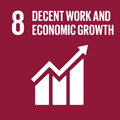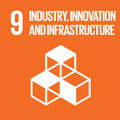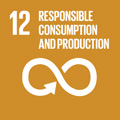- Docente: Marco Bortolini
- Credits: 6
- Language: English
- Teaching Mode: Traditional lectures
- Campus: Bologna
-
Corso:
Second cycle degree programme (LM) in
Mechanical Engineering (cod. 5724)
Also valid for Second cycle degree programme (LM) in Engineering Management (cod. 0936)
Second cycle degree programme (LM) in Advanced Automotive Engineering (cod. 9239)
-
from Sep 20, 2022 to Dec 21, 2022
Course contents
The Course aims at fully understand and use the AutomodTM tool with the final purpose to develop in an adequate dynamic simulation environment the following aspects about manufacturing processes:
- Conveyor systems;
- Material handling systems;
- Flexible Manufacturing Systems;
- Flexible Assembly lines;
- Manual and automatic warehouse systems;
- Supply chain and logistic systems.
At the end of the course, the Participants will be able to:
- Understand the concepts underlying process simulation;
- Know the range and capabilities of simulation;
- Create a simulation of a complex production system;
- Produce and interpret a simulation report;
- Realize and analyse What-If scenarios.
Readings/Bibliography
Brooks Automation, Inc., “Automod User's guide Volumes 1 and 2, 2003.
Jerry Banks, “Getting Started with AutoModTM”, Brooks Automation, Inc., 2004.
Brooks Automation, Inc., “Beginning AutoModTM Tutorial”,, 2003.
J. Banks, J. S. Carson, B. L. Nelson, “Discreteevent system simulation (2nd ed.)”, Upper Saddle River, N.J., Prentice Hall, 1996.
A.Pareschi, E.Ferrari, A.Persona, A.Regattieri, “Logistica Integrata e Flessibile”, Ed.Esculapio (in italiano)
Pareschi A., “Impianti industriali”, Progetto Leonardo, Società Editrice Esculapio, Bologna (in italiano)
Chung a. C., "Simulation modeling handbook", CRC Press, USA2004.
P. A. Fishwick, “Simulation Model Design and Execution”
C.G. Cassandras, S. Lafortune, “Introduction to Discrete Event Systems”Teaching methods
The Course is applicative and it is developed in the ICT lab so that Students can “learn-by-doing” the AutomodTM tool.
Note. As concerns the teaching methods of this course unit, all students must attend Module 1, 2 on Health and Safety online.
Assessment methods
Full development, in working groups of max. 3 students, of on-going case studies and of a final project simulating a production system.
Office hours
See the website of Marco Bortolini
SDGs



This teaching activity contributes to the achievement of the Sustainable Development Goals of the UN 2030 Agenda.
